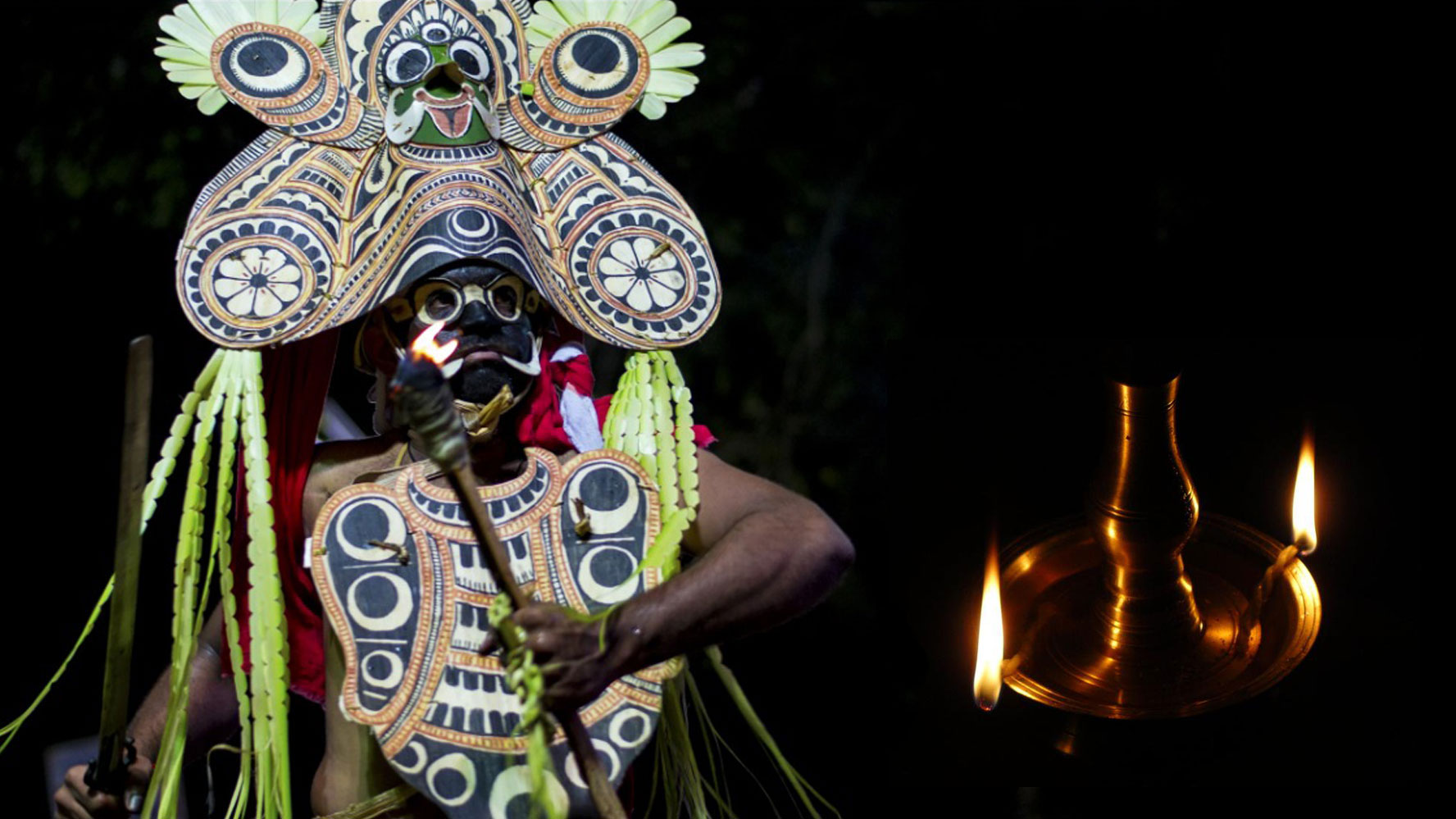Padayani A Perfect Life Science
Kadammanitta Reghukumar
Kerala- the ‘God’s own country’ is a birth place for innumerable art forms filled with life and social values. In addition to the level of worship or artistic presentations, they have the flavour of life of old generations. These older generations are intellegant in finding art in their professions and are able to do their work artistically. Un fortunately, the arrival of external cultures, their influences and the developments of new trends destroyed the identity of the real tradition to a large extent. The net result is the disappearance of several art forms. Many were in the situation of deformation. Some are misinterpreted or unable to get the real flavour and beauty. Hopefully, like glittering stars, some are still alive and active as the carriers of the real culture and tradition. Such a remarkable and peculiar form is ‘padayani’- the well known ritual tradition of central travancore in south kerala.
Just as other art forms, Padayani cannot be considered as a single art form with a given frame. It is the name for a set of rites like ‘oorali thullal’ (a form of worship to please ‘maladeva’ - the hill god, oorali is the priest of maladeva)’Vellamkudi’ (the ritual to please departed souls) and village festival conducting annually in sacred groves as Bhagavathy temples. Thus it is a group of rites and arts coming under are cultural flow. It is flourished and popularised on the bank of the sacred river ‘Pampa’in south Kerala. Still it is active at this area and is mixed with the village life thus it is an evident of the great ‘Pampa River Culture’
The term ‘Padayani’ has several interpretations. One is that it is the representation of a battle array. It is connectd with the march of ‘Kali’ for the fight against the devilish king ‘Darikasura’ the item ‘Thavadi’ in padayani can be attached to this argument. Another one points out that the festival sprangup from the meeting of soldiers at the intervals of battles for time pass. They used witty remarks and humorous shows. To an extentit can be linked to the stires of padayani called ‘Vinodam’. The third argument it in the sense of creativity. It opines that everything in padayani is related to the mighty creation. There are several factors supporting this idea firstly, according to the belief, it is performed to cooldown the furious Kali. It is an escape from destruction and formation of the normal life. Secondly this festival motivates complete purification of the village. There is the cleaning of air, water, sky, earth and ultimately the human mind for getting healthy generations, Thirdly, it is an agro-festival conducting at the interval of harvest and next seeding,. It is thanking the mother for providing good harvest and a pray for prosperity in future. There is a process of awaking the earth to receive seeds for next harvest is going through the festival. The relevance of creation lies in these situations.
Apart from other rituals, padayani has a different structure. When other forms concentrates mostly to the shrine, padayani brings the deity outside from the shrine or the sacred grove to the middle of the society. Performances are the correct mingling of the deity with the people without a priest or mediator. Padayani culture believes that the performances are to show the mother goddess by the total village. It bring padayani to connect with the concept of total theatre. The belief is that the mother is every where and she join with the people when they calls.
This festival survives as part of mother culture. In older times women have super position and they are the reulers. This is a custom practiced by the living beings. The social orders of honeybee is the best example , human societies also followed this system. Padayani is a continuation of it. People belives that the mother is the protector and at the same time destructure also. Destruction is the result of mistakes. To to overcome this, she must be pleased. They found padayani as the solution for this.
The Rhythm Structure
Padayani is a treasure of traditional rhythms. Padayani society recognised the rhythm base of atom to theuniverse the rites of Padayani starts with the application of particular rhythm to call the deity. From here onwards in each and every performsnces there are rhythms of several forms.
The rhythm structure of padayani has very close resemblance to the hill structures of this area. There is an intellegant copying of the nature. Sources of the development of rhythms, extensions, mixing of two or more rhythms and making of new ones are the chracteristics of this tradition. There is a rare rhythm called ‘Jeeva Thalam’ which is founded only in padayani, It is considered as the rhythm of the soul. The frame and filling of rhythms are based on arranged syllables called ‘Vaitari’. many of them have such long syllables. It indicates its traditional structures.





